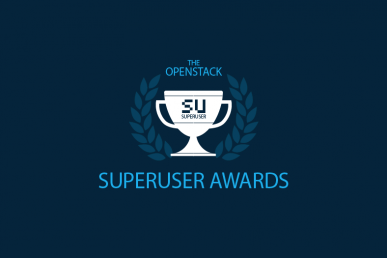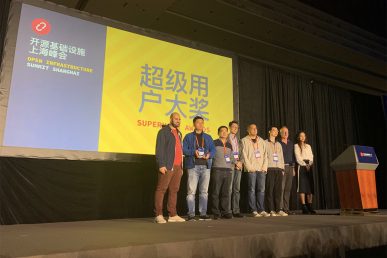It’s time for the community to help determine the winner of the Open Infrastructure Summit Shanghai Superuser Awards. The Superuser Editorial Advisory Board will review the nominees and determine the finalists and overall winner after the community has had a chance to review and rate nominees.
Now, it’s your turn.
The Baidu ABC Cloud Group and Security Edge team is one of five nominees for the Superuser Awards. Review the nomination criteria below, check out the other nominees and rate the nominees before the deadline October 8 at 11:59 p.m. Pacific Daylight Time.
Rate them here!
Who is the nominee?
Baidu (Nasdaq: BIDU), a dominant Chinese search engine operator and the largest Chinese website in the world and a global leading AI company, has over 800,000 clients, more than 30,000 employees, and nearly 15,000 patents. In 2018, the company reported an annual revenue of $14 billion.
Application units: Baidu ABC (AI, Big data, and Cloud computing) Cloud Group who integrated Kata Containers into fundamental platform for entire Baidu internal and external cloud services, and Baidu Security Edge team who built a secured environment upon Kata Containers for cloud edge scenario.
Members: Xie Guangjun, Zhang Yu,He Fangshi, Wang Hui, Shen Jiale,Ni Xun, Hang Ding,Bai Yu, Zhou Yueqian,Wu Qiucai
How has open infrastructure transformed the organization’s business?
In 2019, our Kata Containers based products are enjoying market success in areas of FaaS (Function as a Service), CaaS (Container as a Service) and edge computing. Baidu’s cloud function computing service (CFC) based on Kata Containers provided computing power for nearly 20,000 skills of over 3,000 developers to run cloud function computing for Baidu DuerOS (a conversational AI operating system with a “100 million-scale” installation base). Baidu Container Instance service (BCI) has built a multitenant-oriented serverless data processing platform for the internal big data business of Baidu’s big data division. The Baidu Edge Computing (BEC) node is open to all clients while keeping them separated from each other for security and ensuring high performance.
How has the organization participated in or contributed to an open source project?
Baidu is very actively involved in collaboration across open source communities. They are a golden member of CNCF foundation, Premier Member of LF AI Foundation, Hyperledger Foundation and LF Edge foundation and silver member of Apache Foundation.
Baidu is maintaining more than 100 open source projects on github, including Apollo, an open source autonomous driving platform, PaddlePaddle, a Deep Learning Framework and more.
For Kata containers, Baidu has more than 16 functional patch modifications, among which 8 patch sets were contributed to the community. We also published white paper of Kata Container production practice as contribution to the community.
What open source technologies does the organization use in its open infrastructure environment?
Baidu has used Kata Containers to provide high performance and protect data security and the confidentiality of algorithms in different cloud computing scenarios. By using the OpenStack control plane, we seamlessly integrated Kata Container instances with Baidu cloud storage and network in BCI products.
Other technologies including QEMU-KVM/OpenStack (including nova, cinder, glance and neutron), Open vSwich and Kubernetes are used in Kata Containers-based products. Open source device mapper (Linux kernel) and qcow2 format are used in the storage performance optimization, and DPDK is applied for network performance optimization.
What is the scale of your open infrastructure environment?
Baidu has more than 500,000 machines deployed with Linux kernel based on community version.
Baidu Cloud products (including virtual machines and bare metal servers) cover 11 regions including North and South China, 18 zones and 15 clusters (distributed in different regions and zones), which covers tens of thousands of physical machines; One container cluster includes more than 5000 physical machines.
What kind of operational challenges have you overcome during your experience with open infrastructure?
- Support of mounting user codes dynamically in container – As Kata Containers’ host and guest are not in the same kernel, static mounting before startup is certainly possible, but how to mount dynamically is a challenge.
- Cold start performance optimization of cloud functions – By optimization, the performance of creation and startup can be as the same as RunC.
- Function density optimization – The higher the function density is, the more services a physical function can provide, thus lowering the cost.
- Extensibility of hardware – Baidu’s cloud also provides products and services in big data and AI. Hardware such as GPU for AI requires passthrough to the inside of the container. By using Kata Containers, Baidu achieved extensibility of hardware in AI services.
How is this team innovating with open infrastructure?
- The Baidu Edge Computing (BEC) product requires a virtual machine with very light creation and release while reserving the similar device model. This product is based on Kata Container, and the bottom layer uses QEMU optimized by Baidu.
- By integrating with modules such as Nova, Glance and Neutron on OpenStack, Baidu implemented co-location of container instance nodes and virtual machines.
- Based on virtio-blk/virtio-scsi, Baidu optimized the file system of VM so that its performance is close to that of the host (single queue and single thread).
- Baidu implemented a network scheme compatible with Neutron and Open vSwitch for network maintenance including network isolation and speed limit and reusing the previous network architecture.
Each community member can rate the nominees once by October 8 at 11:59 p.m. Pacific Daylight Time.
- Exploring the Open Infrastructure Blueprint: Huawei Dual Engine - September 25, 2024
- Open Infrastructure Blueprint: Atmosphere Deep Dive - September 18, 2024
- Datacomm’s Success Story: Launching A New Data Center Seamlessly With FishOS - September 12, 2024

)










